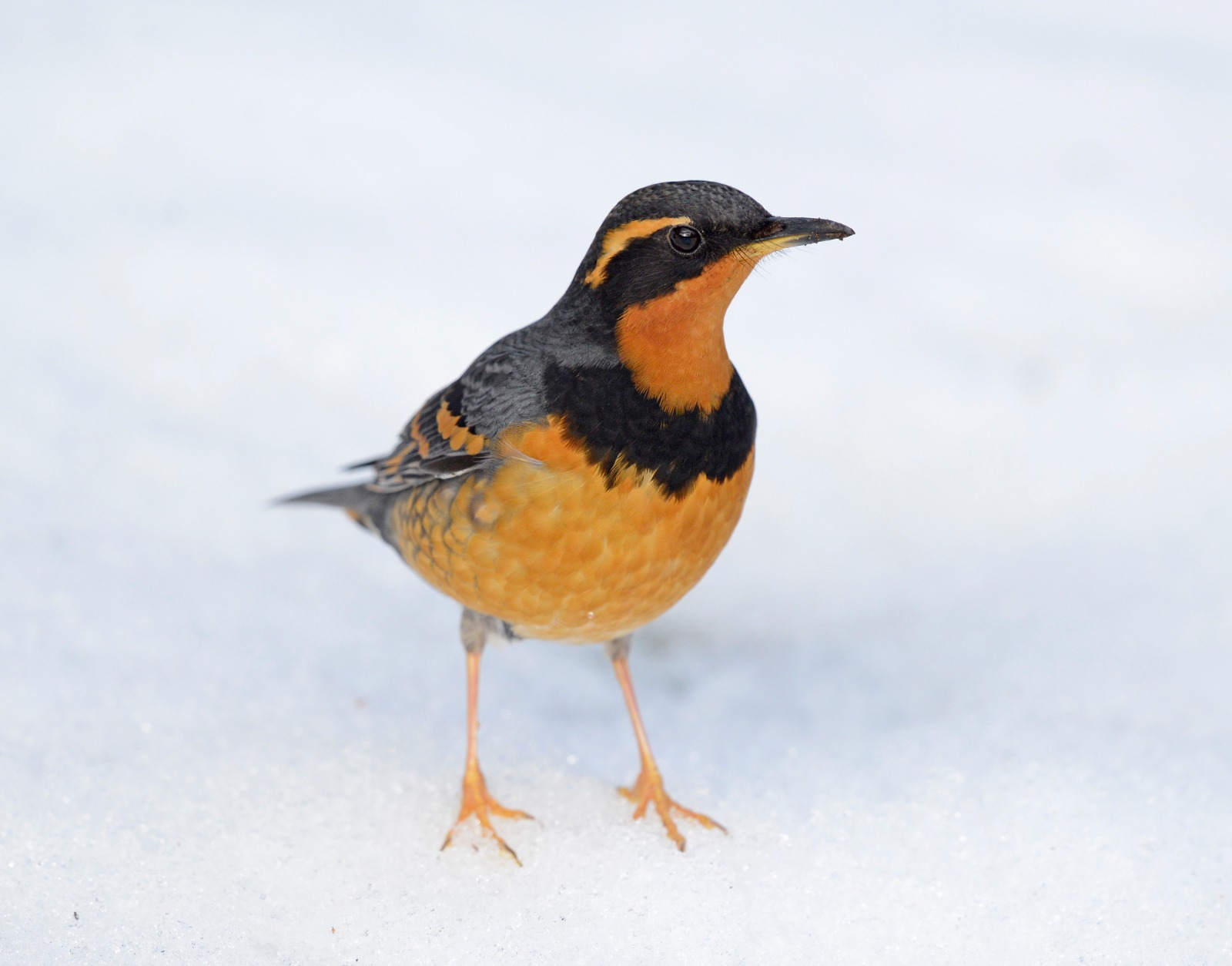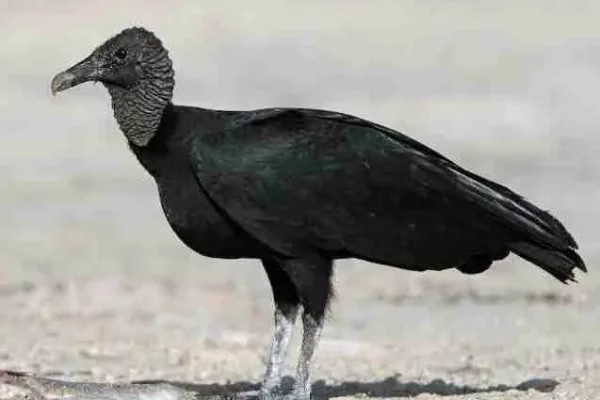In the ever-fascinating world of avian wonders, some birds mesmerize us with their vibrant and captivating colors. Among them, the Black Birds with Orange Wings stand out as extraordinary creatures that command attention with their striking fusion of contrasting hues. These remarkable birds boast sleek black plumage that serves as a canvas for their radiant orange wings, creating a breathtaking display of nature’s artistic prowess. In this blog post, we embark on an exploration of these captivating creatures, delving into their habitats, behaviors, and the significance behind their awe-inspiring coloration. Join us as we unravel the mysteries and marvels of Black Birds with Orange Wings, immersing ourselves in their vibrant world.
List of Black Birds with Orange Wings
- American Redstart
- Orchard Orioles
- Red-winged Blackbird
- Tricolored Blackbird
- Rufous Hummingbird
- Baltimore Oriole
- Varied Thrush
- Allen’s Hummingbird
American Redstart

- Scientific name: Setophaga ruticilla
- Lifespan: 10 years
- Size: 4.3 to 5.5 in
- Native to: America
The American Redstart (Setophaga ruticilla) is a small migratory songbird found in North America. The male boasts bold black feathers with vibrant orange patches on its wings, tail, and sides. The female, on the other hand, exhibits a more subdued coloration with grayish tones and yellow accents. These active birds inhabit various forested habitats, foraging for insects and spiders. Known for their agility, they flutter and flash their wings while flitting through the foliage. During the breeding season, males engage in captivating courtship displays, hopping and flaring their tails to attract females. Females construct cup-shaped nests close to the ground using twigs, bark, and moss. Conservation efforts are essential to protect their habitats. Birdwatchers and nature enthusiasts appreciate the American Redstart for its distinctive appearance and melodious songs.
Orchard Oriole

- Scientific name: Icterus spurius
- Lifespan: 9 years.
- Size: 5.9-7.1 in
- Native to: Canada–United States border south to central Mexico
Orchard Orioles (Icterus spurius) are striking songbirds found in the eastern and central regions of the United States. The male displays bright orange-yellow plumage on its head, throat, and breast, contrasting with black wings and back. Females have a duller yellow coloration. These medium-sized birds prefer open woodlands, orchards, and suburban areas. They feed on insects, fruits, and nectar. During the breeding season, males sing melodious whistling songs to attract mates and defend their territories. Unfortunately, Orchard Orioles have experienced population declines due to habitat loss and fragmentation. Conserving their preferred habitats, promoting sustainable practices, and raising awareness are crucial for their survival. Birdwatchers admire their vibrant appearance and enchanting songs, making Orchard Orioles a delightful species to observe in nature.
Red-winged Blackbird

Image Source
- Scientific name: Agelaius phoeniceus
- Lifespan: 2-3 years
- Size: 9 inches
- Native to: most of North America and much of Central America.
The Red-winged Blackbird (Agelaius phoeniceus) is a common sight across North America, recognizable by the male’s shiny black feathers with red and yellow epaulets. Females are brown and often blend into the surrounding vegetation. These birds inhabit a range of wetland habitats, including marshes and roadside ditches. They are social birds that often form large flocks and feed on seeds, insects, and small invertebrates.
During the breeding season, males sing a distinctive “conk-la-ree” song while perching on tall vegetation, establishing their territories and attracting females. Females construct cup-shaped nests made of grass and plant fibers close to water. Red-winged Blackbirds are ecologically significant as they disperse seeds and control insect populations. These birds are also a favorite among birdwatchers for their striking appearance and melodic songs.
Tricolored Blackbird (black bird with orange on wings)

Image Source
- Scientific name: Agelaius tricolor
- Lifespan: 3-6 years
- Size: 20-25 centimeters (8-10 inches)
- Origin: North America
The Tricolored Blackbird (Agelaius tricolor) is a unique species of blackbird found only in California. It is known for its striking appearance, with males sporting black feathers and a bright red patch on their shoulders, while females have a brownish-gray coloration.
Tricolored Blackbirds inhabit a range of wetland habitats, including marshes and grasslands. They feed on insects, seeds, and other small invertebrates.
During the breeding season, these birds form large colonies, with nests often found in close proximity to each other. Females construct cup-shaped nests made of grasses and other plant fibers. Tricolored Blackbirds are facing population declines due to habitat loss, and conservation efforts are necessary to protect these birds.
Despite their small range, Tricolored Blackbirds are admired by birdwatchers for their beauty and unique behavior in forming large colonies during the breeding season.
Rufous Hummingbird

Image Source
- Scientific name: Selasphorus rufus
- Lifespan: 3 to 5 years in the wild
- Weight: 2.7 to 4.3 grams
- Size: 7 to 9 cm (2.8 to 3.5 inches) in length, with a wingspan of 11 cm (4.3 inches)
- Origin: Found in western North America, from Alaska to Mexico
The Rufous Hummingbird (Selasphorus rufus) is a small, brightly colored bird found in North America. Adult males have a vibrant orange-red plumage on their backs and sides, with a greenish-gold color on their crowns and tails. Females, on the other hand, have a green back and crown, with a rusty-orange coloration on their sides and tail feathers.
These birds are migratory, with their breeding grounds in the western parts of North America and their wintering grounds in Mexico. Rufous Hummingbirds feed on nectar from flowers and also consume insects and spiders for protein.
During the breeding season, males defend their territories and perform elaborate courtship displays, including high-speed aerial displays and vocalizations. Females build small, cup-shaped nests using moss, lichen, and spider webs. Rufous Hummingbirds are an important pollinator and a popular bird among birdwatchers for their striking coloration and aerial acrobatics.
Baltimore Orioles (Small black birds with orange wings)

- Scientific name: Icterus galbula
- Lifespan: about up to 11.5 years
- Size: between 6.5 and eight inches
- Native to: North America and Canada
The Baltimore Oriole (Icterus galbula) is a vibrant and melodious bird found in eastern North America. The male Baltimore Oriole boasts stunning orange plumage on its underparts, head, and shoulders, contrasting with its black wings and back. Females exhibit a more muted combination of yellow and brown colors. These orioles prefer a variety of habitats, including deciduous forests, orchards, and parks.
Known for their rich and flute-like songs, Baltimore Orioles fill the air with their melodious tunes during the breeding season. They construct intricately woven, pendulous nests made of grass, bark, and plant fibers, typically hanging from the tips of tree branches.
Baltimore Orioles have a diverse diet, feeding on nectar, fruits, insects, and spiders. Their role as pollinators and insect controllers is crucial to ecosystems.
These beautiful birds migrate to Central America and the Caribbean during the winter months, making them a delightful sight for birdwatchers and nature enthusiasts in their summer breeding grounds.
Varied Thrush
- Scientific name: Ixoreus naevius
- Lifespan: about 4 to 5 years
- Size: 7.9 to 10.2 in
- Native to: North America
The Varied Thrush (Ixoreus naevius) is a striking songbird native to the western parts of North America. With its bold orange and black plumage, the male Varied Thrush stands out among the forest foliage. Females have a more muted appearance, featuring grayish-brown tones with orange accents.
These thrushes prefer dense coniferous forests and mountainous areas. They forage on the ground, using their stout bills to probe for insects, spiders, and berries. Varied Thrushes are known for their haunting and flute-like songs, adding a beautiful melody to the forest.
During the breeding season, males defend their territories and perform quiet courtship displays. They build cup-shaped nests using moss, grass, and twigs, typically positioned close to the ground.
Varied Thrushes undertake altitudinal migration, moving to lower elevations during the winter months. Their elusive nature and enchanting appearance make them a sought-after sighting for birdwatchers and nature lovers.
Allen’s Hummingbird

Image Source
- Scientific name: Selasphorus sasin
- Lifespan: 3 to 5 years in the wild
- Weight: 2.5 to 3.5 grams
- Size: 7 to 9 cm (2.8 to 3.5 inches) in length, with a wingspan of 11 cm (4.3 inches)
- Origin: Found in western North America, from Alaska to Mexico
The Allen’s Hummingbird (Selasphorus sasin) is a small, agile bird found along the western coast of North America. The males have a striking appearance, with a metallic green back and rusty orange-red throat and crown. Females have a more subdued plumage with a green back and grayish-white underparts.
These hummingbirds are known for their impressive aerial displays, darting through the air with lightning-fast agility. They feed on nectar from a variety of flowering plants and are important pollinators in their ecosystems.
Allen’s Hummingbirds breed in California and migrate to Mexico during the winter months. They construct small, cup-shaped nests made of moss and spider webs, often located in trees or shrubs.
Due to their small size and elusive nature, Allen’s Hummingbirds can be challenging to spot, but their beauty and grace make them a delight to observe for birdwatchers and nature enthusiasts.
Final Thoughts on Black Birds with Orange Wings
As we conclude our journey through the captivating world of Black Birds with Orange Wings, we are left in awe of the stunning beauty and significance of these avian marvels. The fusion of sleek black plumage with vibrant orange wings creates a visual spectacle that showcases nature’s artistry. We have explored their habitats, behaviors, and the role their striking coloration plays in courtship displays and species recognition. These birds serve as a reminder that the natural world is filled with awe-inspiring diversity and vibrant colors that never cease to amaze. Let us carry the appreciation we have gained for these black birds with orange wings and continue to celebrate the remarkable wonders that nature bestows upon us.
Frequently Asked Question
How can I attract black birds with orange wings to my backyard?
To attract black birds with orange wings, you can provide suitable habitat elements such as trees, shrubs, and flowers that offer food sources like nectar, insects, or fruits. Offering specific feeders or plants that cater to their dietary preferences can increase the likelihood of attracting these birds. It’s also essential to create a safe and inviting environment with fresh water sources and protection from predators.
Are black birds with orange wings considered endangered?
The conservation status of black birds with orange wings varies depending on the species. Some may face threats due to habitat loss, climate change, or other factors. It’s crucial to consult regional bird conservation organizations or field guides for specific information about the status of particular species in your area.
How can I learn more about black birds with orange wings?
You can expand your knowledge about black birds with orange wings by referring to field guides, birding websites, and birding communities. Local birdwatching groups or nature centers may organize educational events or guided birding tours where you can observe and learn more about these fascinating creatures in their natural habitats.
Further Readings
- Black Birds with Red Heads
- Black Birds with Red Eyes
- Black Birds with white Beaks
- Black Birds with Green Heads
- Black Birds with White Bellies
- Black Birds with White Spots
- Black Birds with Orange Wings
- Black Birds with White Stripes on Wings
- Black Birds with Yellow Heads
- Black Birds with Gray Heads
- Black Birds with Blue Heads
- Black Birds with Black Beaks




![20 Stunning Black Birds with White Bellies [Images + IDs]](https://birdsology.com/wp-content/uploads/2023/05/51891956448_e0135058a2_b-600x400.jpg)

![Astonishing Black Birds with Black Beaks [with Images]](https://birdsology.com/wp-content/uploads/2023/08/49615141838_ca851353ea_b-600x400.jpg)
